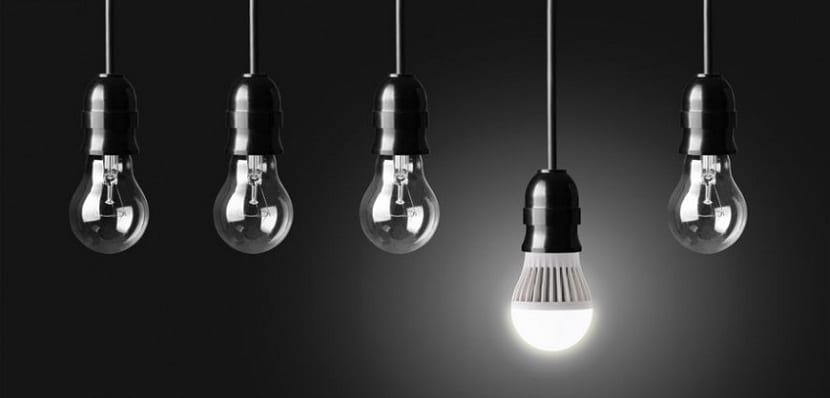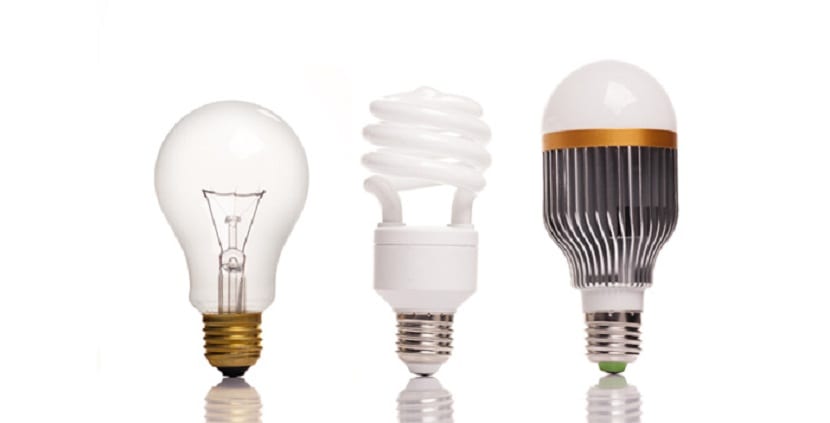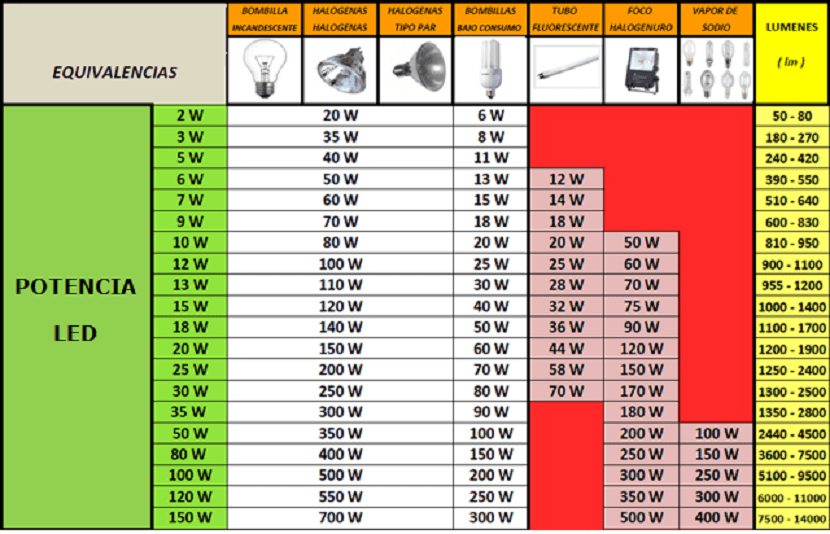
Surely you have heard about LED bulbs and their reduction in electricity consumption. Technology is developing more and more and we have to learn to save both in energy consumption and in the emissions that we generate in the atmosphere by using this energy. It is normal to be a little disoriented at first when we decide to modify the light bulbs in our home for LEDs. Both the Incandescent bulb as the low consumption do not generate savings and we must know well the equivalence of LED bulbs to optimize spending well.
In this article we are going to explain in detail the equivalence of LED bulbs with respect to other bulbs and we will give you some tips so you can save more on the bill.
Swap old bulbs for LEDs

When we see the electricity bill in the months of highest consumption, we throw our hands at our heads. And it is that only in the lighting of the house we miss a big pinch. Simply with By changing the light bulbs in the house, we will be saving a lot. It is true that, at first, they tend to cost more than incandescent or low-consumption ones. But therein lies the difference in quality.
While a conventional incandescent light bulb spends most of its energy on heat, LEDs are capable of working at low temperatures. Try to touch a working light bulb and you will see how cold it is, while the conventional ones you burned out. It is necessary to modify the lighting environment of the house if we want to optimize energy consumption. Buying all the bulbs we have from the house directly to the LEDs can be expensive at first (although here you have offers to get them cheaper). Since conventional bulbs have a shorter lifespan, you simply we can wait for them to be founded and change them one by one.
LED bulbs have a better quality and generate significant savings in electricity consumption. This benefits us enormously since we can use that energy saving in other things. However, when it comes to changing the bulbs we find ourselves with the dilemma of the watts. We have to know which is the equivalence of the LED bulbs with respect to the others.
The power from one type of bulb to another has been modified and now we have to know which is equivalent to which so that our consumption is lower. It would be useless to change an LED bulb to save if we buy it with a higher power than necessary.
Equivalence of LED bulbs with conventional ones

The first and main thing you should know is that the light output of these new bulbs is not measured in watts. This is a new measure called Lumens or lumens. This measure tries to tell us the amount of light emitted by the bulb for practical purposes. The more lumens the bulb has, the more light it will give us. This makes a big difference with the power of conventional bulbs of a lifetime.
Since LED bulbs require less power, they end up requiring less energy to illuminate the same amount of space. They are the most efficient and ecological bulbs that exist today. What's more, has the advantage of not containing polluting elements in its manufacture, such as mercury, or other materials that are toxic and radioactive.
The savings are due to the fact that it does not have the need to generate plasma bridges or heat the mercury as in the case of neon. It just turns on immediately and doesn't waste any unnecessary energy.
Bulb equivalency is not to be taken lightly. Even knowing the system of measurement of watts, it is important to have as a reference that the unit of measurement is not the same. Each manufacturer has a series of characteristics that they give to the product and that will differ in the quantity and quality of the light emission. Keep in mind that not all conventional 40W bulbs emit the same actual amount or intensity of light.
In the case of LEDs, watts only indicate the state of consumption in the operation of the bulb, but not the amount of light they are emitting.
Lighting efficiency

The unit of measure for lumens is related to the amount of light emitted by the bulb and the electric power consumed, which is what is measured in watts. Another parameter that is taken into account when establishing equivalences with other bulbs is luminance. Is about the lumens per square meter emitted by the bulb in question. Normally it will vary depending on the height at which it is installed and the size of the area that we want to illuminate.
With an LED bulb that has a 5W we can achieve the same amount of illumination as a conventional bulb of about 35-40 W. Therefore, the electrical power used and, after all, the cost we generate is up to 85% less than conventional bulbs.
Table of equivalences
This can be better visualized in a table where the approximate values of the different types of bulbs, their power and the ability to illuminate are collected. The equivalences can be verified with almost all types of bulbs, from incandescent, to halogen, through sodium, etc. The 7W LED bulbs are equivalent to a conventional 60W halogen.
If we multiply this saving by all the light bulbs we have in the house and the time they are on, the saving is something really effective. In addition, they do not generate extra heat (which is very appreciated in summer) and has a much longer useful life.
Here we leave you the table with all the most important equivalences where you can compare how much the watts of the LED bulb are compared to the others and vice versa. In this way, you can get it right when it comes to maintaining good lighting in the home, saving as much as possible.

I hope this information helps you to have the clearest ideas on this topic.
Please, I would like you to explain to me how is the process of generating electrical energy in a bioelectric plant that uses the remains of crops (sugar cane) or wood, and the possible advantages and disadvantages of its use.